

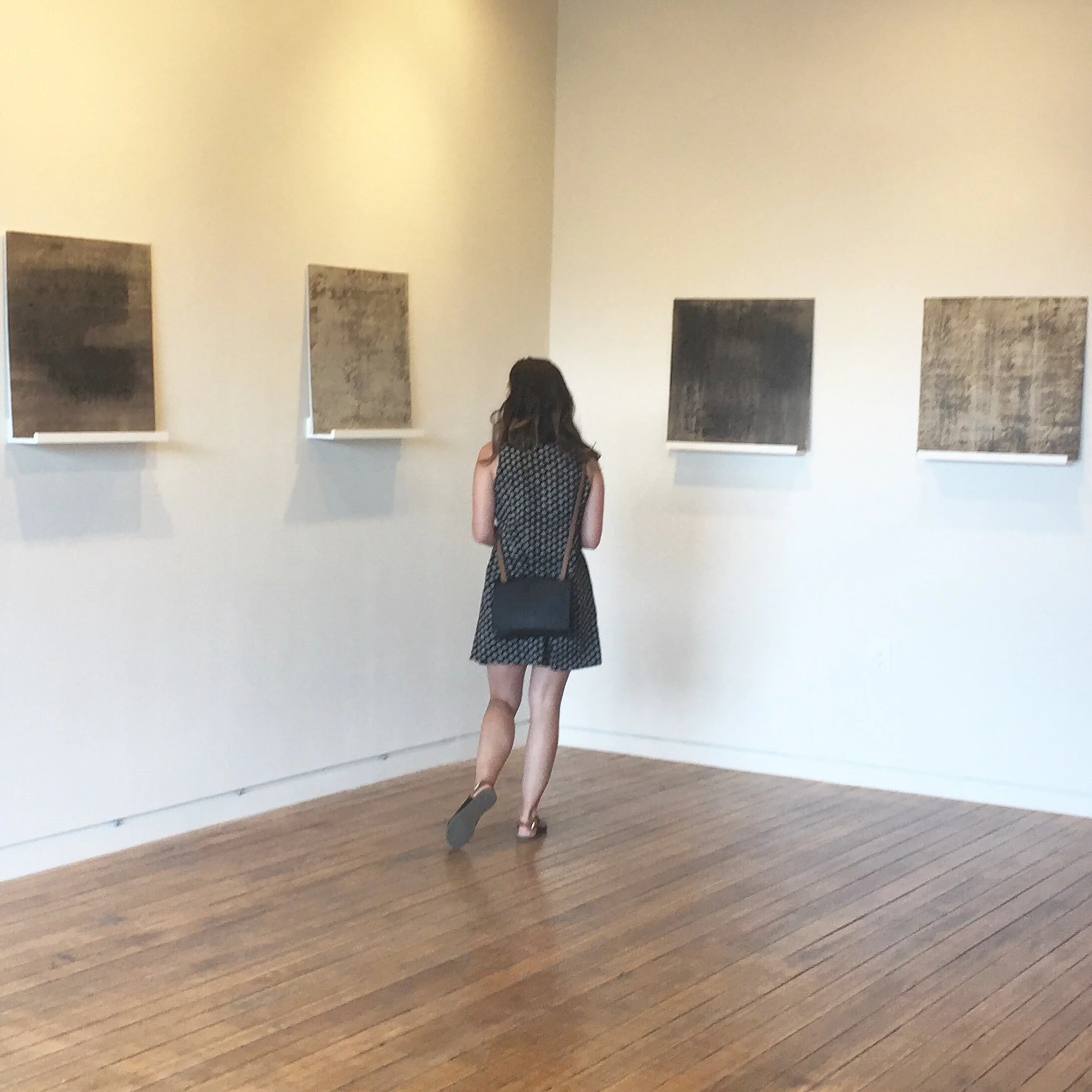


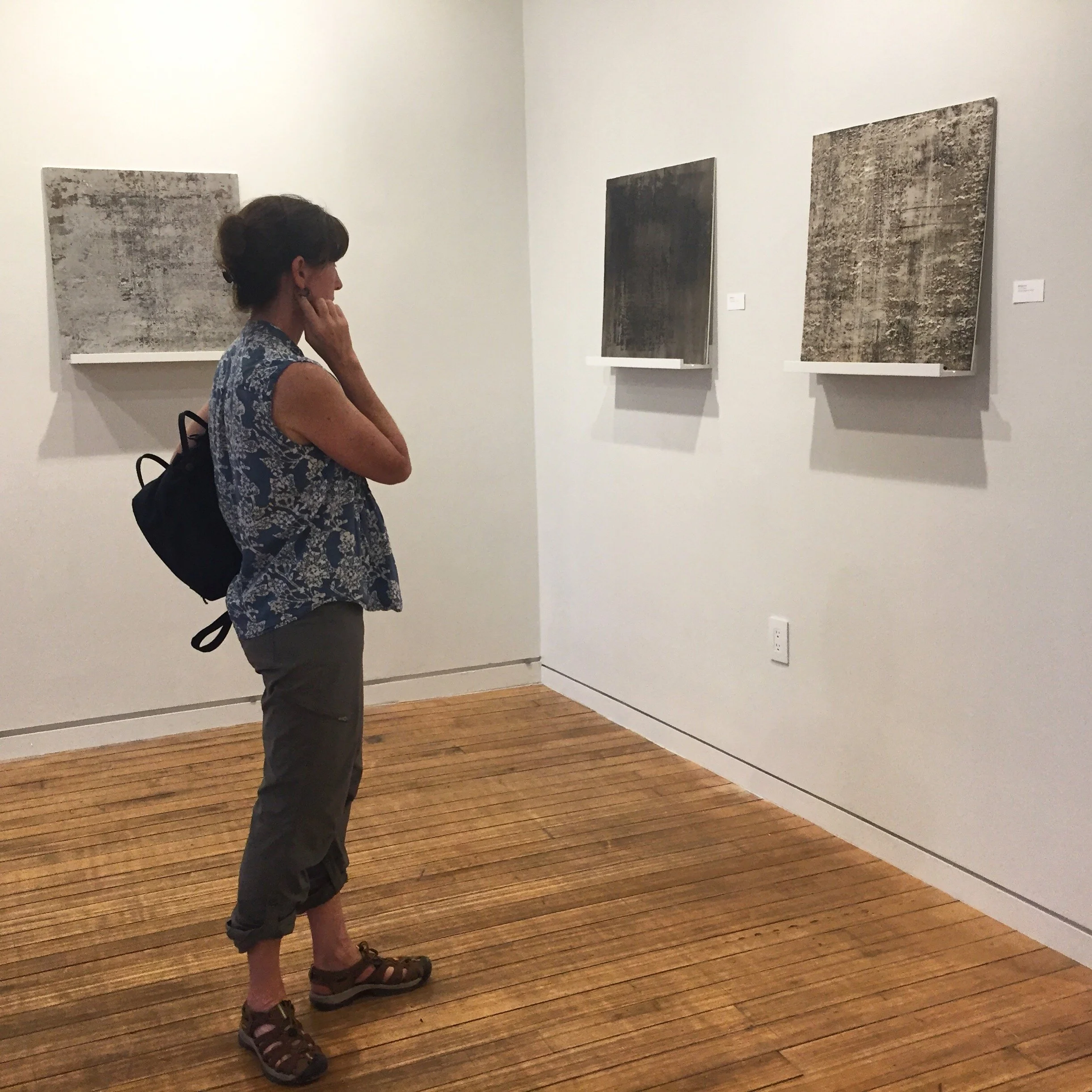

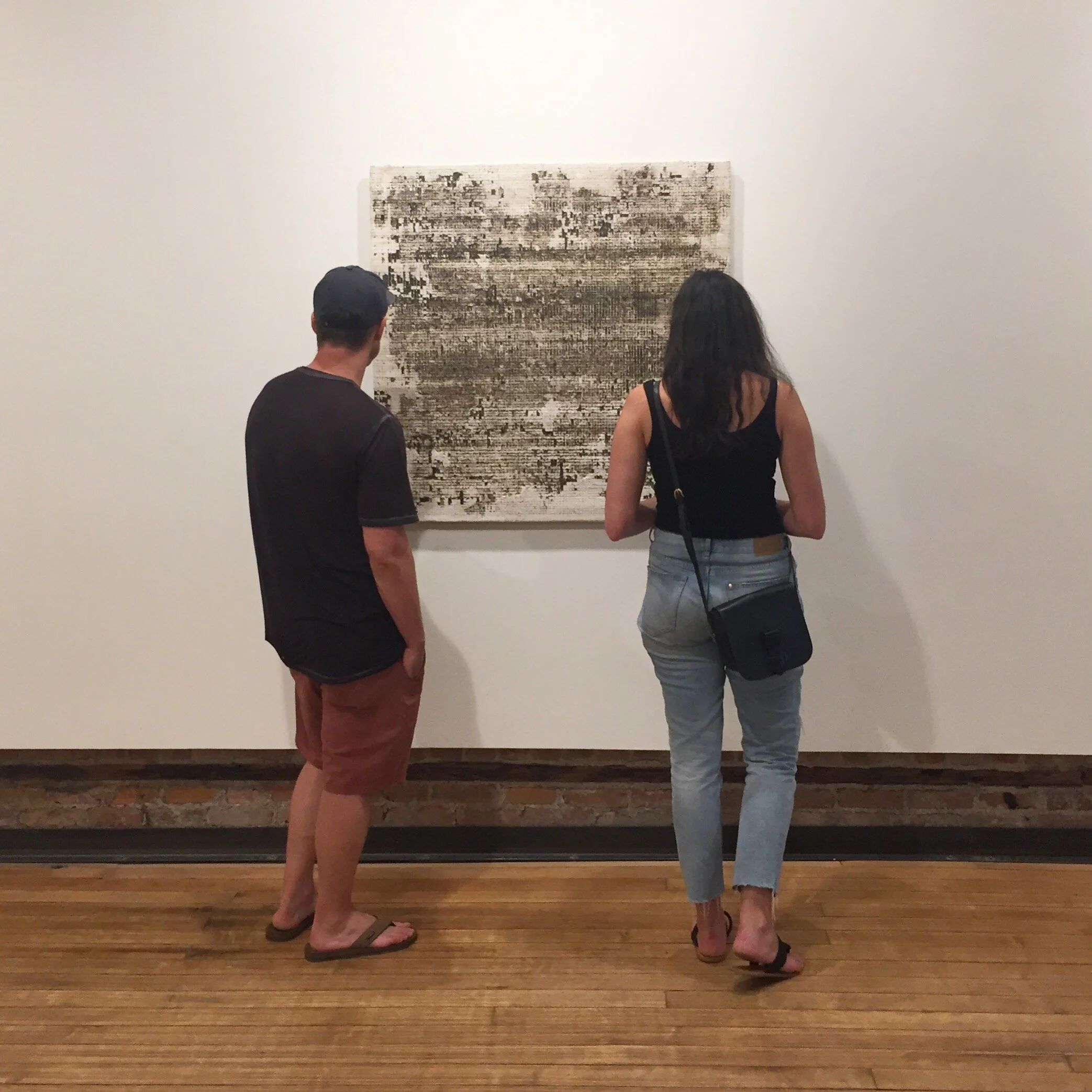







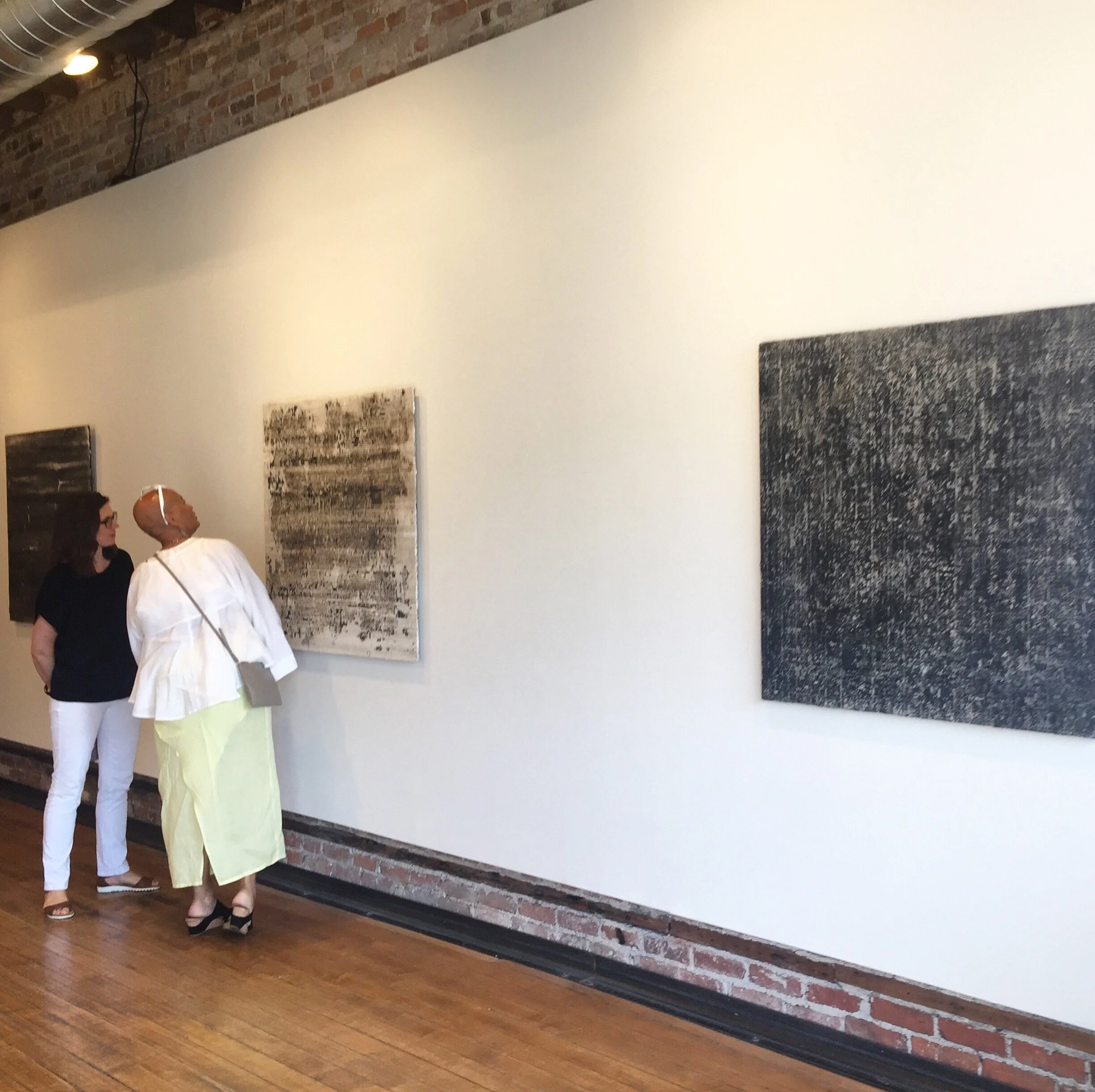

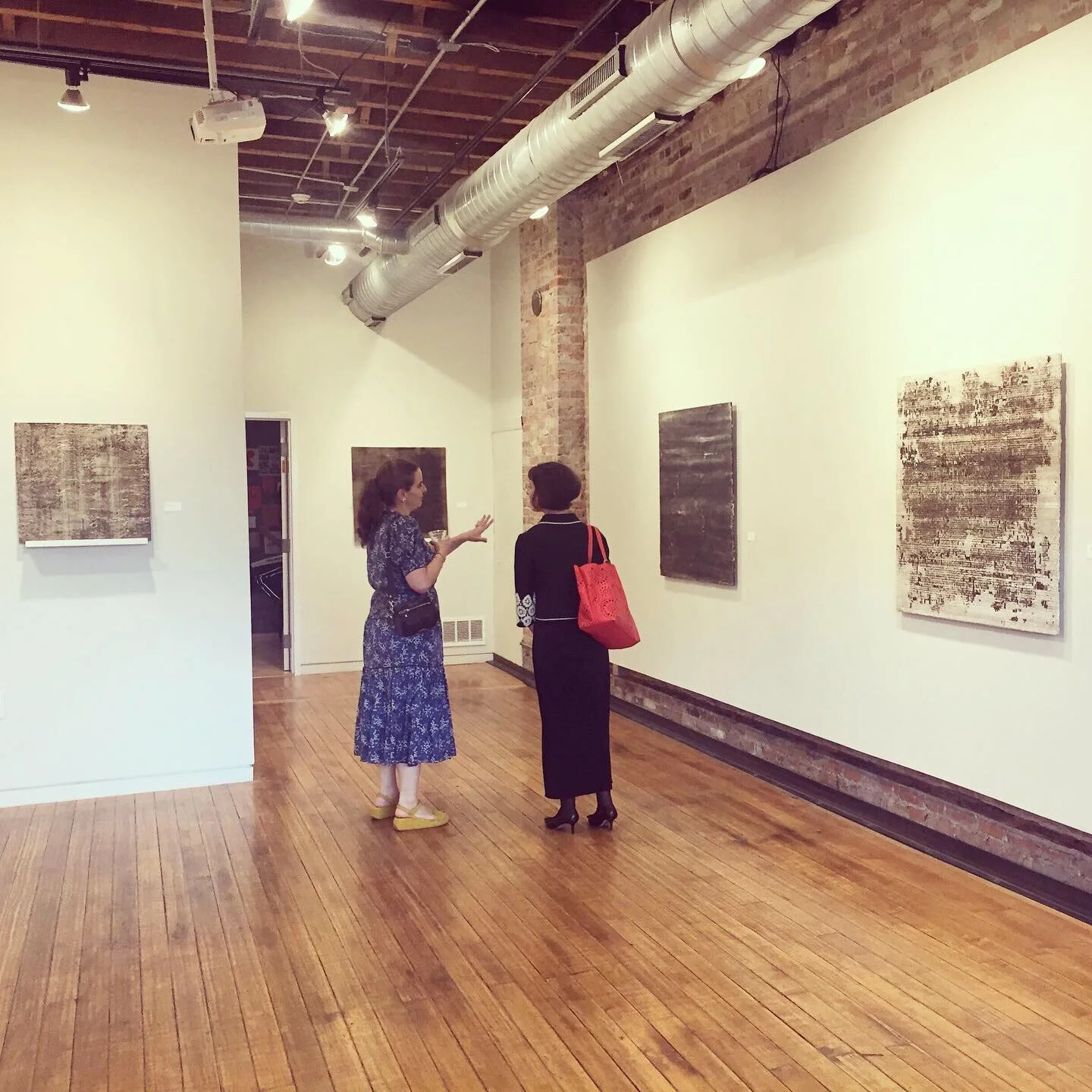


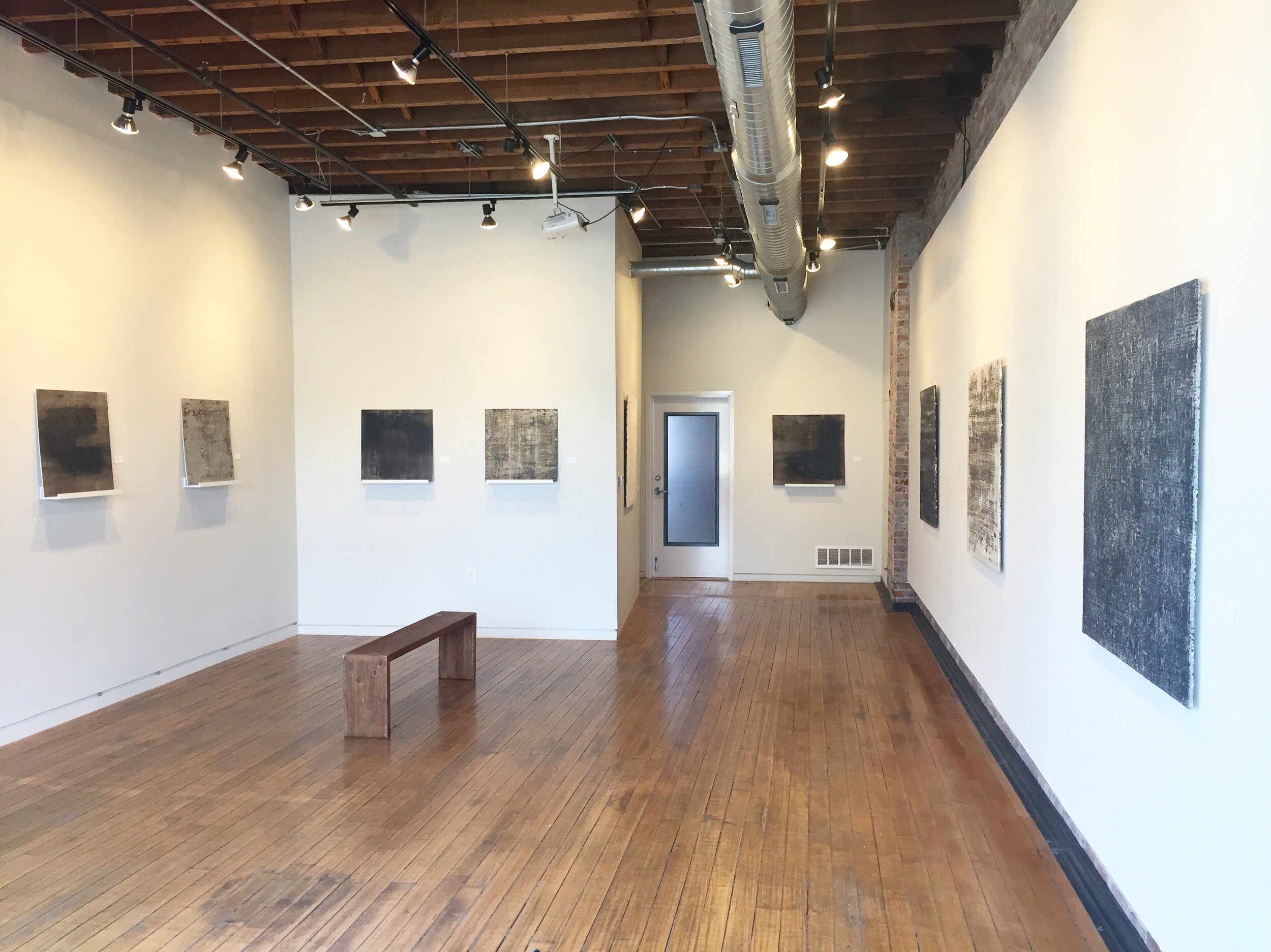
Your Custom Text Here
K.OSS Contemporary Art is pleased to present "Corpus," a new exhibition by British artist Richard Nott.
The abstract works of "Corpus" are indicative of Nott’s methodology and practice, with an emphasis on line, form, texture and ‘non-color,’ including shades of brown, grey and velvety blacks. According to Nott, viewing the panels is like being witness an evolution of matter. The work reflects a history of the materials: Cracks, cuts, marks and modifications of the surfaces show off a stunning array of alterations. There are no oils or acrylic paints in Richard’s studio; he works with industrial materials, bitumen, emulsions and varnishes, building them up layer upon layer, often over finely drawn grids or lines, into a textural palimpsest, before painstakingly scraping or gouging them back to reveal what lies underneath. Nott also often exposes the work to the elements, letting wind, fire and rain make their own natural impressions on the surface.
“I have no interest in illusionistic texture,” says Nott. “The work must be its own entity and have its own story ... It is an organic object, a living thing.” The evolution of each piece follows Nott’s exploration of these ideas. A piece can change within its own cycle of existence; the scores or smears applied early in the work’s life may be covered and brought back to the surface like a memory.
Born in 1963, Nott received his Fine Art degree from Lancashire Polytechnic and his M.A. in Fine Art at Reading University. His work forms part of numerous international and national collections. Most recently, he has exhibited “Histolysis” at the Millennium Gallery in St Ives. This is Nott’s first exhibition in Michigan.
K.OSS Contemporary Art is pleased to present "Corpus," a new exhibition by British artist Richard Nott.
The abstract works of "Corpus" are indicative of Nott’s methodology and practice, with an emphasis on line, form, texture and ‘non-color,’ including shades of brown, grey and velvety blacks. According to Nott, viewing the panels is like being witness an evolution of matter. The work reflects a history of the materials: Cracks, cuts, marks and modifications of the surfaces show off a stunning array of alterations. There are no oils or acrylic paints in Richard’s studio; he works with industrial materials, bitumen, emulsions and varnishes, building them up layer upon layer, often over finely drawn grids or lines, into a textural palimpsest, before painstakingly scraping or gouging them back to reveal what lies underneath. Nott also often exposes the work to the elements, letting wind, fire and rain make their own natural impressions on the surface.
“I have no interest in illusionistic texture,” says Nott. “The work must be its own entity and have its own story ... It is an organic object, a living thing.” The evolution of each piece follows Nott’s exploration of these ideas. A piece can change within its own cycle of existence; the scores or smears applied early in the work’s life may be covered and brought back to the surface like a memory.
Born in 1963, Nott received his Fine Art degree from Lancashire Polytechnic and his M.A. in Fine Art at Reading University. His work forms part of numerous international and national collections. Most recently, he has exhibited “Histolysis” at the Millennium Gallery in St Ives. This is Nott’s first exhibition in Michigan.
Richard Nott: Corpus